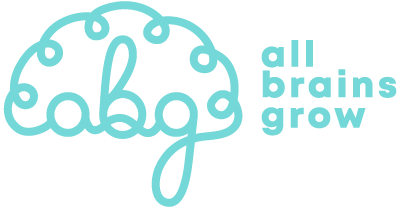One moment your child is happy and the next moment something triggered their autism meltdown. It doesn’t matter where you are or when, it can be impossible to predict. And once your child becomes so overwhelmed there’s no going back. They’re no longer in control of their behavior, parts of their brain have shut down. You don’t want your child to experience this over and over again — and you’re exhausted from how outside of your control it is.
Even with brain science, behavior tips, and meltdown guides, you won’t always know what triggers autism meltdowns, but you can learn patterns and behaviors. Even more importantly, learning what triggers autism meltdowns can help you feel less helpless as a parent.
Temper Tantrum Vs. Meltdown
A temper tantrum and a meltdown are often considered the same thing because they can look similar. A child might verbally and/or physically lash out in a socially inappropriate way in both a temper tantrum or a meltdown. The difference is the reason behind their actions.
Typically, a temper tantrum happens when a child doesn’t get their way. They react purposefully to get what they want. When the child gets what they want or when there’s no one listening anymore, the tantrum stops, and the child carries on with their life unphased.
A meltdown isn’t manipulative — it’s a cry for help. Your child has been so overstimulated that parts of their brain shut down. The meltdown isn’t something they do but something that happens to them. Meltdowns usually last at least 20 minutes after the trigger is removed. Even once the meltdown has subsided, it can take a while for your child to calm down. Often, they struggle to remember what happened.
Meltdowns can be traumatic. The problem? Neither you nor your child always can tell what triggers an autism meltdown.
What Happens During A Meltdown?
Think of the last time you were in extreme pain or emotional distress. You didn’t think about anything beyond that. The past and future disappeared, and responding properly became a challenge.
This is what goes on with your child during a meltdown, except to an even more extreme degree.
Their limbic system (behavioral and emotional responses) and sensory-motor strip (sensations and motor functions) overreact. Their sensitive prefrontal cortex (planning, decision making, social behavior) is not activated at all, letting the other areas of the brain take over.
Remember, your child’s meltdown has a purpose, whether to get rid of a sensory issue or to communicate frustration.
Signs That Your Child Is About To Have A Meltdown
Before your child has a meltdown, there are often signs. This is called the “rumble stage.”
Look for symptoms like:
- Repetitive movements like rocking back and forth, stopping their feet, rubbing their face, or pacing
- Seeking reassurance with repetitive questions
- Zoning out
- Self-injury, like hitting themselves, banging their head against the wall, pulling their hair
- Look at their body: Is their face red? Is their body stiff?
If your child is displaying these signs, distraction and reassurance can help prevent a meltdown. But it doesn’t always work, especially if you don’t know what triggered the autism meltdown.
What Triggers Autism Meltdowns?
You don’t always know what triggers your child’s reaction, but staying aware of the possibilities can help you avoid them in the future. Here are some potential meltdown triggers:
- Someone is talking about your child in front of them. Your child might not react in the moment, but their emotional pain can pop up much later.
- Someone hurt their feelings at school, or they’re being bullied. You might not know about it.
- There was a smell, sound, or sensation that made them uncomfortable.
- Your child needs to hear more compliments and fewer reactions to negative things they’re doing. The ratio of positive to negative feedback needs to be higher.
- No one is explaining what is happening around your child. Without predictability and very clear conversations, your child can feel like they’re left in the dark.
- They’re tired or are feeling pain or discomfort.
- They’re putting too much pressure on themselves because they’re worried about failing you or others in their environment.
- They feel powerless because they can’t change or leave their environment and are too controlled.
What Isn’t Talked About Enough
Yes, more often than not, meltdowns are caused by something that was said or done by the people around. It is sad to say that as caregivers, we are often the triggers of our child’s meltdown, but it’s the truth.
Whether through words, actions or simply energy, autistic people can triggered by the people around them.
It’s important to realize this so that not only meltdowns happen less, but so we stop pointing fingers and finding solutions to things that aren’t actually causing the meltdown. It’s sometimes easier to say it was a sensory problem instead of saying it was our fault, right?
Ways To Remove Autism Meltdown Triggers
Because meltdowns are caused by sensory or emotional overload, there are things you can do to help minimize the effects of these triggers.
- Noise-canceling headphones to make noise less overwhelming
- Changing the environment by going outside, inside, or changing rooms
- Distraction with a snack, game, or toy
- Physical touch like skin brushing, hugs, or cuddling
- Changing clothes to something more comfortable
- Be aware of what kind of pressure you are putting on them through your words and your actions
Remember that no two neurodivergent people are the same. What triggers one person might not trigger another. The only thing you can control during a meltdown is yourself.
What To Do During Your Child’s Meltdown
Meltdowns can make you feel helpless as a parent. It’s hard to see your child in pain, and it’s exhausting to never know when your child is going to be triggered by something.
There’s no one way to prevent meltdowns completely, but knowing as a parent what to do when a meltdown happens is priceless. You can become closer with your child after and learn ways to reduce the number of meltdowns your child has.
Knowing what to do before, during and after a meltdown is actually integral to your child’s growth, and to yours.
3 questions to ask yourself:
- Are you giving energy to the behavior you want to stop?
- Are you emotionally detaching yourself from the outcome?
- Once the meltdown is over, are you using the meltdown as an opportunity to teach?
We created a FREE guide to teach you exactly how to do this.
Download 5 Ways To Handle Meltdowns Without Feeling Helpless. You don’t need to lose control even when your child does.


